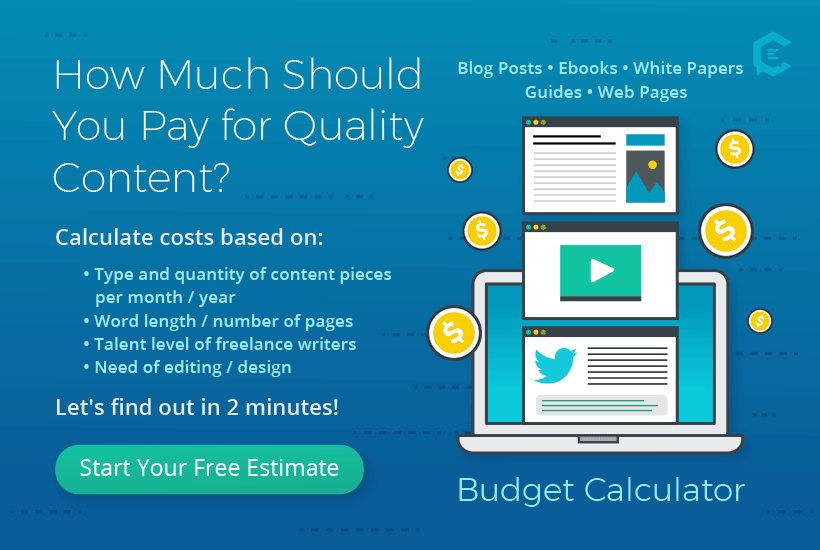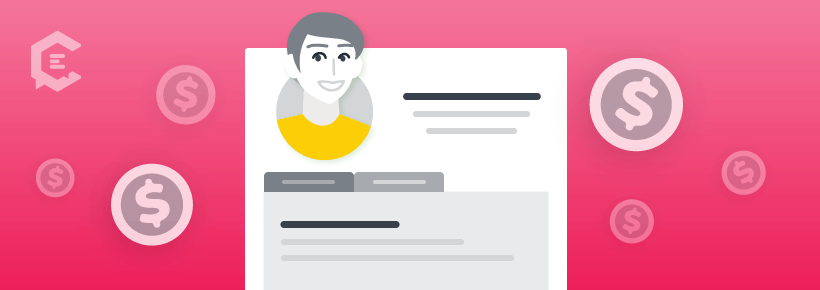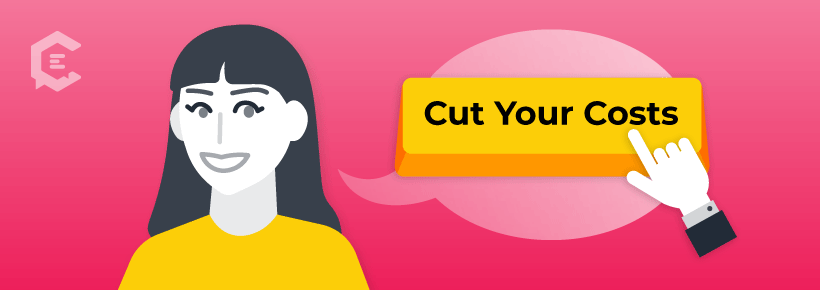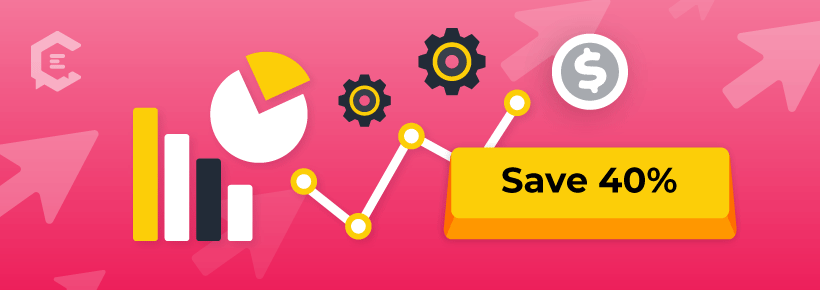What is a CTA? In marketing, a CTA is a “call to action” or the compelling language used to get a consumer to click a button or link, or to take some other action to move further down the sales funnel or customer journey.
There is only one guarantee in B2B content… a call to action (CTA).
Everywhere you turn — blogs, emails, landing pages, social media posts, ads, videos, websites, ebooks — a shiny button or punchy one-liner calls to you like a siren from the digital sea. But unlike a siren, you’re rarely hypnotized by what that CTA says because it’s empty, boring, irrelevant, generic… insert adjective of choice.
Often a call to action ends up being an afterthought, a dark and mysterious one that confuses the hell out of people. “Learn More” and “Get Started” are slapped onto a piece of content and marketers call it a day. Buyers don’t want to click, because they don’t know what they’re getting into or they don’t have a reason to care.
Strong CTAs encourage buyers to take actions that lead them down the road to becoming your customer.
You use themes all the time in your content strategy, so why not use the same approach with your call to action? You already know how to write a call to action. Below are out-of-the-box ideas that leverage themes to entice your future customers to click and convert.
Ready to “Learn More?” Kidding, let’s get to it…
 Buyer persona call-to-action examples
Buyer persona call-to-action examples
To speak the language of your audience, you must first know who that audience is. Developing your B2B buyer personas with this helpful template is step one. The next step is integrating buyer personas into your B2B content.
A call to action is arguably the most important content you create. Messaging is more cohesive when you lean on the content strategy you worked so hard to build. So, what are the top goals and challenges you learned during surveys you conducted for buyer persona research? Use these insights in your CTAs.
Text CTA: Follow in the footsteps of high-performing account executives.
Button CTA: Achieve Goals
Text CTA: Execute more quality content with less resource strain.
Button CTA: Start Automating
Aspirational call-to-action phrases
Ready to create wonderful content? This question on ClearVoice’s landing page for hiring writers uses an aspirational approach to motivate people to click. What if ClearVoice went the other way and said: “Want to avoid low conversion rates?” Waah-waah.
If organizations create wonderful content, they are more likely to connect with buyers and convert them. By focusing on positive messaging and the potential for success, there is no need to dwell on headaches. Everyone has challenges and people don’t need to be reminded of them constantly. Speak to what your prospect wants to achieve to inspire action.
Text CTA: It’s your turn. Achieve [aspiration] when you partner with our team.
Button CTA: I’m Ready
Text CTA: Make faster, data-driven decisions with [company name] solutions.
Button CTA: Count Me In
Challenge-solving call-to-action words
But, of course, everyone experiences challenges and you can’t completely ignore pain points. Addressing challenges elegantly is messaging your prospect will also relate to. When writing a challenge-focused call to action, demonstrate how your solution or service will help your future customer be victorious.
Text CTA: Take the first step in overcoming [challenge X, Y, and Z].
Button CTA: Step 1
Text CTA: Gain a competitive edge with [company name].
Button CTA: Beat the Competition
Call to action using a testimonial
Got reviews? Congratulations, you have unbeatable validation to leverage. You already know that humans trust other humans more than brands. Here’s an idea for incorporating customer validation that doesn’t involve another tired website testimonial slider… use a testimonial in your call to action instead.
Text CTA: “[Company name] cut my IT costs by $2,500 per month.”
Button CTA: Cut Your Costs
Text CTA: “[Company name] helped me protect the time of our [team name] and executives.”
Button CTA: Protect Your Team
Buyer stages in your call to action
Our goal with B2B content is to help buyers solve their problems by understanding their motives — instead of following our own agenda. Aligning content types with buyer stages applies to your call to action as well. If your CTA doesn’t align with buyer stages, you end up with a very disjointed piece of content and less likelihood for conversions.
Let’s say you gated a “how-to” ebook asset and anyone who downloads joins a nurture email campaign. Sales-driven teams will default to the “wanna chat?” CTA in every follow-up email. Whoa.
This Decision stage call to action is really presumptuous since that prospect engaged with an Education stage asset. Instead, after sending the “thank you for downloading” email with the asset, create a buyer-aligned email series with appropriate CTAs that move your prospect slowly down the funnel…
Education (top of funnel)
Email 1: Educate further with a relevant blog post.
Text CTA: Read our most popular blog to understand what real-life [role name (s)] expect.
Button CTA: Read Blog
Consideration (mid-funnel)
Email 2: Show a video with a relatable customer success story.
Text CTA: See how [company name] transformed [customer name’s] entire process.
Button CTA: Watch Video
Decision (Bottom of funnel)
Email 3: Now it’s time for a chat with a demo scheduling action.
Text CTA: Thousands of [role name {s)] are succeeding with our [product name] solution.
Button CTA: Schedule Demo
Content takeaway call-to-action examples
When someone reads your content, they will hopefully walk away learning something new (aka… the takeaway). Why, oh why is it that the concluding call to action on a blog or article has nothing to do with the content takeaway?
An easy way to tie your call to action to the takeaway is to play off your title or header. We all carefully construct headlines, with 58 percent writing 2-3 headlines for a typical blog post before making a final headline decision. If that headline is written well, it sums up the why of that particular piece of content.
Headline: Deliver More Than Expected with [Product Category] Software
Text CTA: [Company name] helps you overdeliver and distinguish your business.
Button CTA: Stand Out
Headline: How to Master Your SaaS Sales Process and Close More Deals
Text CTA: Take the next step in mastering your SaaS sales process.
Button CTA: Close More Deals
Data-driven call-to-action phrases
If you have original data from a survey, testimonial, or ROI calculator, your call to action is prime real estate for these stats. All too often, data is buried in a mid-page paragraph — maybe stats are spotlighted in a pull-quote. Numbers break up text, so numerical data is a great way to grab your buyer’s attention.
Reinforce data you already used in the content by bringing the same numeric result into your call to action. Alternatively, grab a different data point that ties into the theme of your content. By all means, have a little fun when you’re using data in your call to action, as demonstrated in the second Button CTA example below.
Text CTA: Save 40 percent on project completion time and focus on other priorities.
Button CTA: Save 40%
Text CTA: Do you want to increase leads by 65 percent?
Button CTA: Leads, Please
How to write a call to action that gets results
“When it is obvious that the goals cannot be reached, don’t adjust the goals, adjust the action steps.” You would think some genius B2B marketer said these words, but it was Confucius, who was slightly ahead of his time back in the sixth century.
Create a call to action that truly punctuates your message, versus going the generic route. Your messaging will be more impactful and you’ll see that impact with higher conversion rates.
What are you waiting for? “Get Started”… gotcha again.

 Buyer persona call-to-action examples
Buyer persona call-to-action examples




